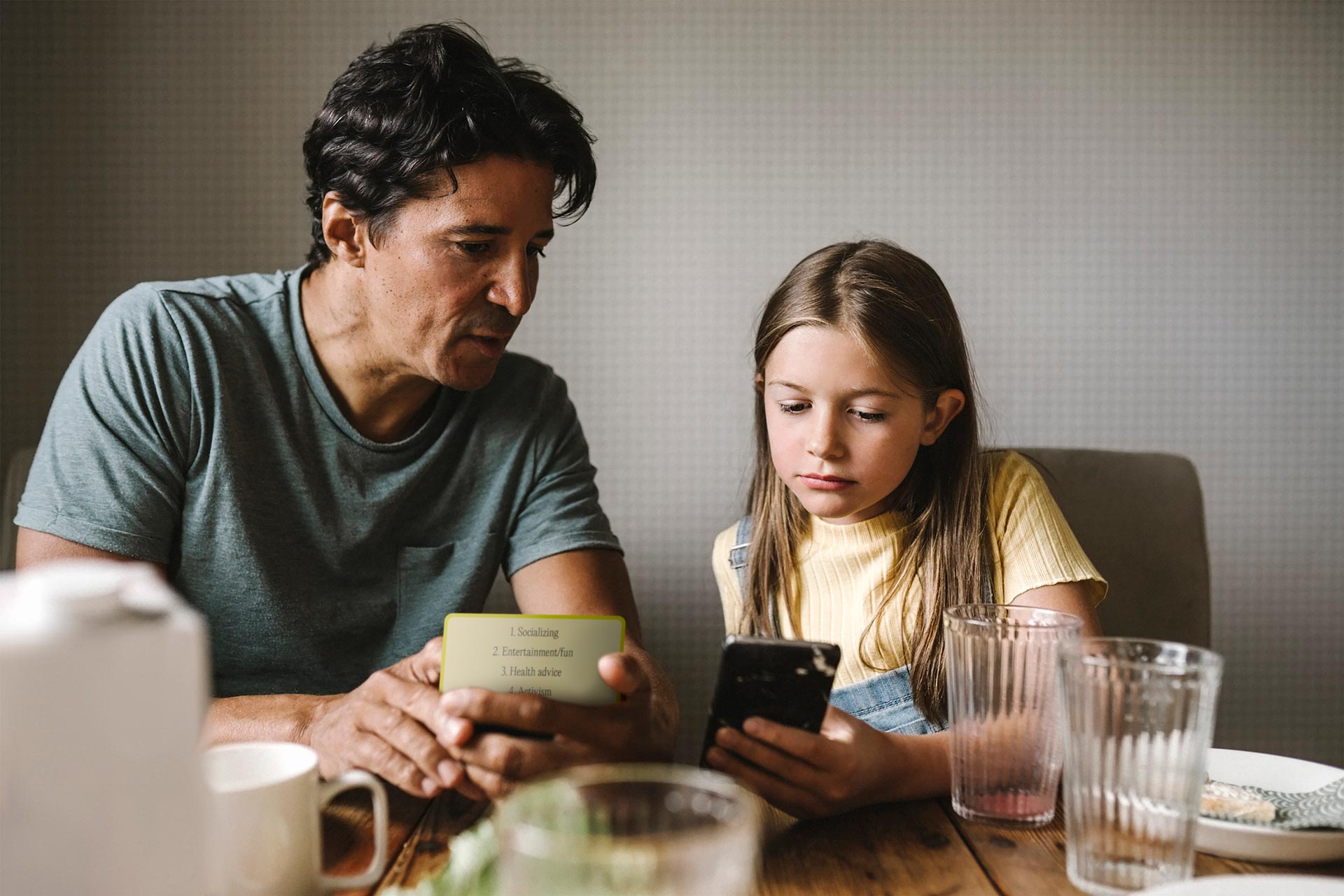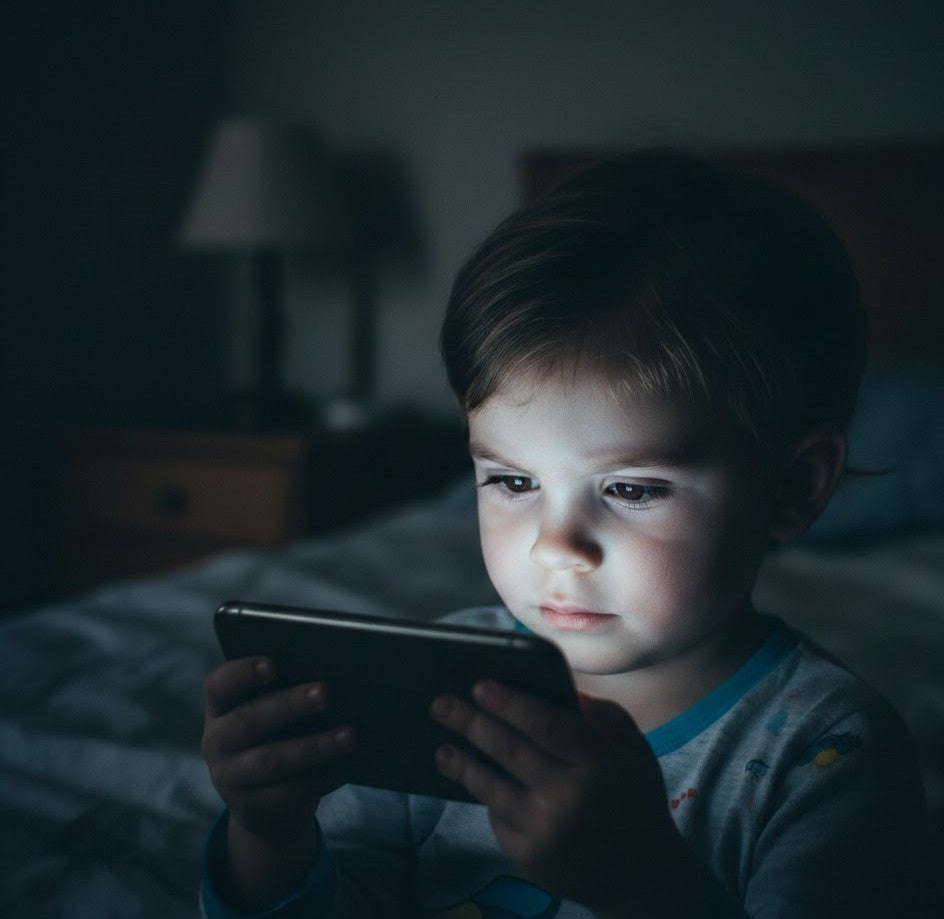- Technology can boost learning, creativity, and connection when used mindfully and in moderation.
- Overuse or unsupervised access increases risks like poor sleep, reduced social skills, and harmful content exposure.
- Balance matters focus on quality screen time, family agreements, and open conversations to guide healthy tech habits.
If you’ve ever handed a tablet to your child just to finish dinner in peace and then worried later about the impact you’re not alone. This is the reality of modern parenting. Technology has become woven into childhood in ways previous generations never imagined. For many parents, the question isn’t whether our kids will use technology, it's how that use will shape their development and their relationships with us.

Technology itself is neither inherently good nor bad; it’s a powerful tool that can enrich lives or complicate them depending on how it’s used. The goal isn’t perfection, and it certainly isn’t complete avoidance. The challenge is finding balance amplifying the benefits while reducing the risks in a way that honors our children’s needs and preserves the connection that matters most.
Understanding child development in a digital age
Before diving into the effects, let’s remember what’s at stake. Childhood isn’t just a set of milestones; it’s a rich process of growing cognitively, emotionally, socially, and physically. Technology interacts with every one of these areas. For instance:
- Cognitive Development: Digital tools can fuel creativity and critical thinking or fragment attention.
- Social-Emotional Growth: Online connections can deepen friendships or cause isolation and FOMO.
-
Physical Health: Screens can introduce new learning opportunities or displace movement and sleep.
These contrasts remind us why nuanced conversations matter. Technology isn’t one thing, it's a spectrum. The outcome depends on how we guide, model, and partner with our kids.
The positive side: how technology can help children thrive
1.Learning beyond walls
When used thoughtfully, technology can extend learning far beyond the classroom and spark genuine curiosity, especially when children are guided to see the positives in screen time. Educational apps, virtual tours, and interactive platforms can make complex ideas feel engaging and fun. A child interested in dinosaurs, for example, can:
- Explore virtual dig sites to see how fossils are uncovered.
- Access age-appropriate research through kid-friendly reading platforms.
- Create hands-on projects like clay models inspired by what they’ve learned online.
These experiences do more than transfer facts; they nurture persistence, problem-solving, and creativity. When parents join in asking questions or sharing excitement they turn screens into a bridge between the digital and physical worlds, making learning active and connected.
2. Creativity and self-expression
Screens aren’t only for consuming content they can be powerful tools for making, creating, and sharing ideas. Many children use digital platforms to explore their imagination in ways that build confidence and problem-solving skills. With the right support, kids can:
- Create original content such as music, digital art, or short films using user-friendly apps.
- Experiment with coding and design by building simple games or animations.
- Express emotions and stories through photography, journaling apps, or video blogs.
These creative outlets help children develop a sense of identity and agency. When parents show interest by asking, “How did you make that?” instead of critiquing we validate their effort and reinforce the idea that technology can be a tool for expression, not just entertainment.
3. Social Connection and Belonging
For many children, friendships and connections now exist both offline and online. Digital spaces can provide a sense of belonging especially when physical interactions are limited. Technology can help kids:
- Stay connected with family and friends through video calls, messaging, and shared online activities.
- Participate in group projects and teamwork, building collaboration skills through virtual classrooms or gaming communities.
- Find safe, moderated communities where shared interests or hobbies create meaningful friendships, especially for shy or neurodivergent children.
These interactions can strengthen social bonds and reduce isolation when guided thoughtfully. Instead of dismissing online friendships, parents can ask questions like, “Who do you enjoy talking to the most?” This keeps communication open and helps children feel supported in both their digital and real-world relationships.
4. Future-ready skills
The world our kids are growing in demands digital literacy alongside traditional learning. Knowing how to use technology responsibly is as important as reading and writing. With early guidance, children can:
- Develop research and critical thinking skills by learning to question sources and verify information.
- Understand online safety and privacy through discussions about what to share and what to protect.
- Collaborate effectively in digital spaces, using shared documents, project tools, and virtual platforms.
When parents model these habits asking questions like, “Who created this and why?” children learn that technology is not just for entertainment but a tool for problem-solving, creativity, and communication. These future-ready skills empower kids to navigate the digital world with confidence and integrity.
The negative side: where technology can undermine growth
Emotional and behavioral issues
- Constant exposure to curated online lives can spark FOMO (Fear of Missing Out), anxiety, and low self-esteem.
- Cyberbullying adds another layer of harm, causing stress and emotional scars.
Safety risks and harmful content
- Unsupervised access can expose kids to explicit content or online predators.
- Many platforms lack strict age checks, making children vulnerable to manipulation.
Reduced sleep quality
- Late-night scrolling disrupts circadian rhythms, making it hard to disconnect from screens.
- Poor sleep affects mood, focus, and overall mental health.
Decline in physical activity
- Increased screen time often replaces active play and outdoor movement.
- A sedentary lifestyle raises risks of obesity and unhealthy eating habits.
Weakened social skills
- Over-reliance on digital interaction limits face-to-face communication skills.
- This can strain family bonds and reduce opportunities for real-world connection.
Balancing the good and the bad: A respectful parenting approach
How do we embrace technology’s benefits while reducing its risks without parenting from fear? The key is connection.
-
Stay curious before setting limits: Start with open questions like “What do you enjoy about this app?” Curiosity lowers defenses and builds trust.
- Create agreements, not commands: Co-design screen rules together such as screen-free meals or bedtime boundaries. Kids honor rules they help shape.
- Model healthy habits: Show balance in your own tech use. Small gestures like putting your phone down during conversation speak loudly.
- Focus on quality, not just time: Encourage creative projects and shared experiences over passive scrolling.
- Keep dialogue open: When problems arise, respond calmly and problem-solve together. Mistakes are learning moments, not battles.
This approach replaces control with collaboration, helping children build skills and responsibility while preserving your relationship.
Practical tips for daily life
- Anchor Routines: Charging stations outside bedrooms protect sleep. Family movie nights turn screens into shared joy instead of solo escape.
- Plan for Transitions: Give five-minute warnings before ending tech time. Pair shutdown with a positive next step reading together or a quick snack.
- Encourage Alternatives: Stock art supplies, board games, and sports gear to make non-screen activities appealing.
- Keep Evaluating: Children grow; plans must adapt. Revisit digital agreements regularly to reflect new needs and challenges.
Conclusion: beyond screens, toward connection
Technology will always evolve. But what steadies children is not a perfect set of screen-time rules, it's the secure bond with a parent who listens, leads, and learns alongside them. By balancing the positive and negative effects of technology on child development, we create space for what really matters: relationships, resilience, and readiness for a complex world.
Screens will always be part of our children’s lives. Let’s make sure love, laughter, and human connection remain the brightest lights in the room.

Frequently asked questions
How does technology affect my child’s emotional development?
Technology can shape emotions in both positive and negative ways. On the positive side, creative apps and supportive online communities can build confidence and self-expression. However, constant exposure to curated social media feeds can lead to comparison, FOMO (Fear of Missing Out), and anxiety. Open conversations and balanced use help kids develop resilience.
What are the benefits of using educational apps for kids?
When thoughtfully chosen, educational apps can:
- Reinforce classroom learning through interactive practice.
- Build problem-solving and critical thinking skills.
- Encourage creativity with activities like art, music, or coding.
The key is pairing apps with parental involvement to make learning active and engaging.
Can too much screen time harm my child’s social skills?
Yes, overuse can limit opportunities for real-life interaction, making it harder for kids to develop important skills like eye contact, turn-taking, and empathy. Balance is essential to ensure screen time doesn’t replace conversations, family meals, or playdates.
How can I help my child use technology in a balanced way?
- Set clear, flexible guidelines about when and where devices can be used.
- Model healthy habits by limiting your own screen use during family time.
- Encourage a mix of activities outdoor play, creative hobbies, and digital learning.
- Keep dialogue open so kids feel safe sharing what they do online.
Are there signs that my child is becoming addicted to digital devices?
Warning signs include:
- Increased irritability when asked to stop using devices.
- Withdrawing from offline hobbies or friends.
- Lying about screen time or sneaking device use.
If these appear, focus on gentle resets and open conversation rather than punishment.
How does technology impact my child’s attention span and learning?
Fast-paced, highly stimulating content can shorten attention spans and make deep focus harder. On the other hand, interactive tools that promote problem-solving can strengthen cognitive skills. Balance and content quality matter more than minutes alone.
What activities can I combine with screen time to support healthy development?
- Watch educational shows together and discuss key ideas afterward.
- Use creative apps as a springboard for offline projects like art or science experiments.
- Turn physical activities into tech-assisted games, such as dance or fitness apps.
At what age is it safe to introduce technology to children?
Experts recommend:
- Under 18 months: Avoid screen use except for video calls with family.
- 18–24 months: Limited, high-quality content with an adult present.
- Ages 2–5: About one hour of quality programming per day, with co-viewing.
- School-age kids: Focus on content and context rather than strict time limits, while maintaining tech-free zones like bedrooms and meals.





